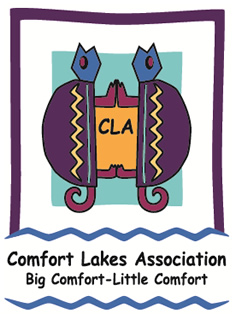News / Events
Seas of Green - What is Filamentous algae?
Naturally occurring filamentous algae is important component of lake ecology
Many of us have experienced it, a nice summer day on the lake spoiled by the seemingly overnight appearance of a greenish-brown sludge floating on the surface of the water. To the average lake visitor, its grotesque appearance and dense mats may lead them to believe that the lake is polluted. However, these mats are a naturally occurring congregation of microscopic plants called Filamentous algae.
Most types of this algae do not produce harmful toxins like blue-green algae, but instead benefit the ecosystem in a variety of ways. Filamentous algae is nature’s way of capturing excessive nutrients and contaminates. For protozoans, insects, and fish, they are also an important food source making them integral components of a lake’s ecology.
While often times Filamentous algae blooms are beneficial, their abundance in a lake can become a recreational nuisance and cause harm. Filamentous algae’s growth and abundance is strictly dependent on the amount of nutrients in the water such as phosphorous. In the spring, the algae will use any available nutrients in the water to start growing at the bottom of the lake. When conditions are right in the summer, it will rise to the surface for more sunlight and create a seemingly sudden “bloom” that can last between 30 and 60 days. If the mats are too dense, they can interfere with fishing, swimming, and even cause fish kills in late summer as the dying algae consumes oxygen.
Preventing problematic Filamentous algae blooms is not easy, but the most effective long-term strategy is to reduce the amount of excessive nutrients from entering the lake.
Tips for homeowners to reduce nutrient loading and control algae blooms:
1. Avoid over-fertilizing your lawn or garden
2. Maintain a native vegetative buffer between your property and bodies of water
3. Pick up pet waste and throw it in the trash
4. Dispose of grass clippings and other yard debris in a compost bin instead of a pond, wetland, or ditch
5. Plant a rain garden to capture and filter stormwater
6. Regularly inspect your septic system for leaks
7. Get involved with your local watershed district and learn how you can help your community and natural resources
For more information regarding Filamentous algae, please contact the Comfort Lake-Forest Lake Watershed District at (651)-395-5850.
Blog Categories: Big Comfort Lake, Little Comfort Lake, Public Safety
